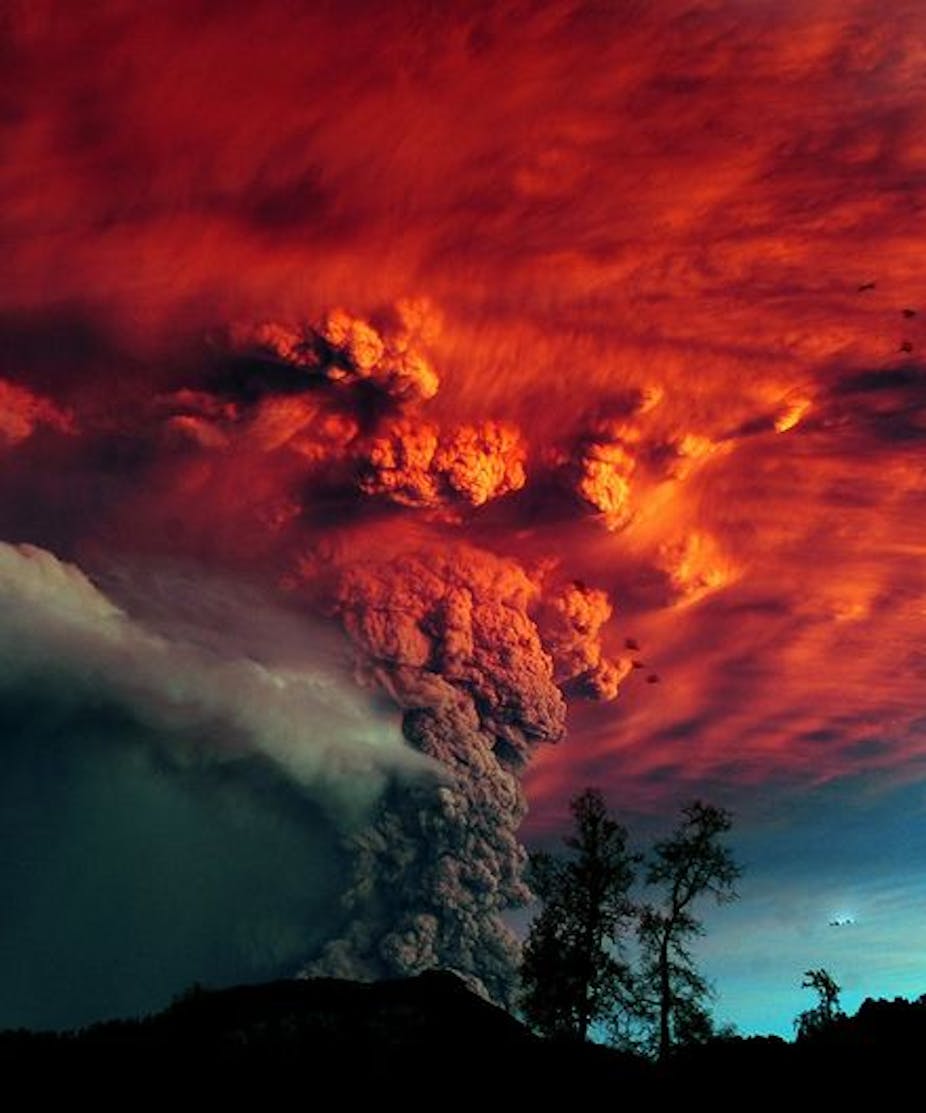The ash cloud produced by Chile’s Puyehue volcanic eruption, which has disrupted flights and left thousands of passengers stranded, could circumnavigate the globe several times, volcanologists say.
Eruptions began after a series of earthquakes on June 4, shooting ash 15,000 metres into the air and forming heavy clouds of fine pumice dust with the potential to choke aeroplane engines.
The ash cloud has floated across the southern Atlantic Oceans, under Africa, into the Indian Ocean and over Australia and New Zealand.
It is now circumnavigating the globe, said Professor Richard J. Arculus from the Geology Research School of Earth Sciences at the Australian National University.
“It’s actually heading back toward Chile now, across the South Pacific and we may get it a second time around,” he said, adding that the second dose could hit Australia within two or three days.
“It would still have the potential to disrupt flights the second time around but it depends on the number of particles per cubic metre and their size. It’s up to the airlines to decide what their aircraft can take,” he said.
“But with any luck it may gradually dissipate.”
It is not uncommon for big eruptions to cause ash clouds that travel the world, said Professor Arculus.
“A big eruption from Pinatubo a few decades ago in the Philippines produced ash that went west and around the globe several times. In that case, the sulfur dioxide droplets reacted with water vapour to form sulfuric acid and that can stay in the atmosphere for several years,” he said.
The ash plume coming out of Puyehue now is significantly smaller it was during the initial eruption but it was too early to see if lava was flowing out, he said.
“While it is still explosive, you don’t want to get too close to this thing. The extreme hazard is when the energy starts to wane slightly the column collapses and comes back at you very hot. That’s what eventually killed people at Pompeii,” he said.
“Once a cloud of ash gets into the lower stratosphere, it can stay aloft for many days, and can easily circumnavigate the globe several times over,” said Dr James Renwick, Principal Scientist in Climate Variability & Change at New Zealand’s National Institute of Water and Atmosphere Research.
“The ash cloud is being lofted into the lower stratosphere and the upper parts of the troposphere (around 8-12km above the earth’s surface), where the mid-latitude westerly wind circulation is strongest,” he said.
Mr Peter Marosszeky, an engineer and aircraft maintenance expert and Senior Adjunct Lecturer in the Department of Aviation at the University of New South Wales, said the pumice stone ash was particularly hazardous for aeroplanes.
“The dry nature of ash, mainly "pumice” stone acts as an abrasive on all exterior parts of the aircraft, ablating the finished surfaces like sandpaper,“ he said.
"In addition, it will choke up the sensitive ports within the engines and block them as well as melting in the turbine area and forming an undesirable coating – not dissimilar to glass – thus destroying the aerodynamic characteristics of the airfoils and cavities of the gas generator.”

